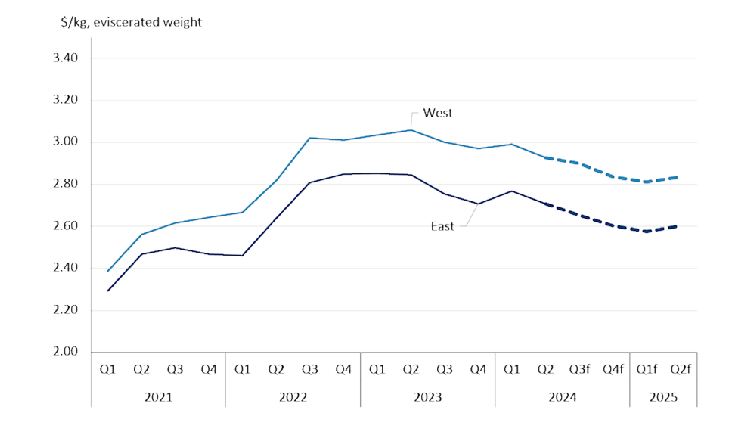The poultry sector has done a remarkable job in addressing the challenges that have come from outbreaks of avian influenza in recent years. Although the virus is still present, the sector can hopefully limit the time and effort required to minimize disease spread and rather focus efforts solely on production to meet evolving demand for chicken, eggs, and turkey. We address the unique aspects of each of these three subsectors below.
Weaker broiler prices driven by lower feed costs
Broiler prices peaked in 2023 and have slowly retreated since. We are forecasting this decline to continue in the second half of 2024 before stabilizing in spring 2025 (Figure 1).
Figure 1: Broiler prices, observed and forecast

Sources: Statistics Canada, FCC Economics
The decline in farm gate prices reflects easing feed costs. In Ontario, the feed cost component of the farm gate minimum live price rose to over $1.00/kg in the summer of 2022 but began falling in the second half of 2023 in line with lower grain and oilseed prices. Feed prices are down -22% relative to their peak in the A-180 quota period (December 2022 - February 2023). Chick costs, however, have been consistently increasing over the last two and a half years, in part a result of the supply shortage caused by the avian flu (Figure 2).
Figure 2: Ontario feed and chick costs by quota period

Source: Chicken Farmers of Ontario
Broiler production growth amid high inventories, imports
Considering the challenges brought about by avian flu, total broiler production in 2023 was surprisingly strong (3.3% growth). For 2024, the USDA is forecasting production growth to slow to 1.7% which, if realized, would be the lowest rate of growth since 2014 (excluding 2020 and the onset of the pandemic).
The Chicken Farmers of Ontario 2023 Annual Report noted that “record-high frozen inventories resulted in conservative [quota] allocations for the first four months of 2024.” With lower production at the start of the year, demand was met with chicken inventories which were drawn down -16% from January to July (Figure 3). Stocks of frozen chicken were historically high heading into 2024 and are usually drawn down in the spring and summer months, though notably last summer the opposite occurred and inventory levels surged. A return to more historical levels of frozen stocks bodes well for production in the latter half of the year and into 2025.
Source : FCC-FAC